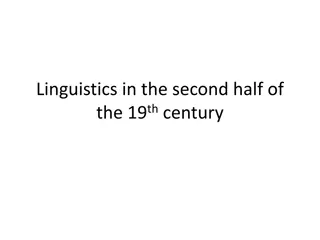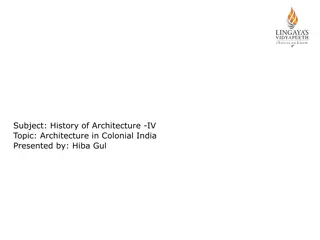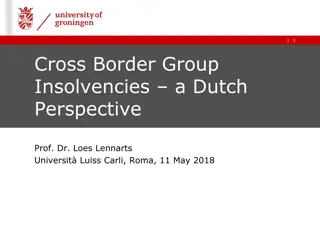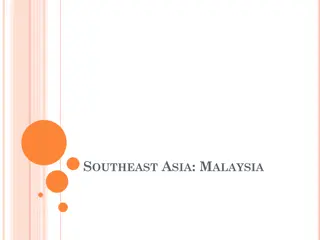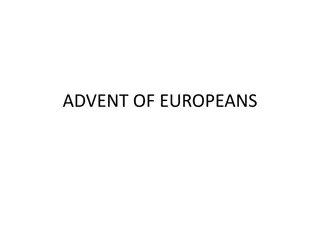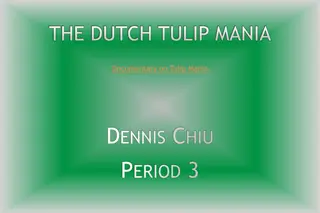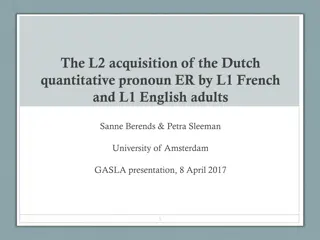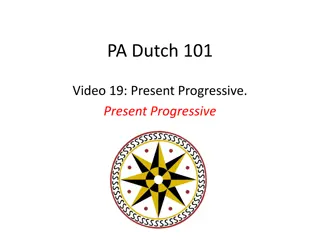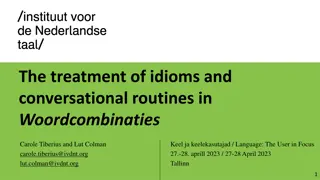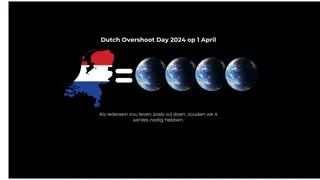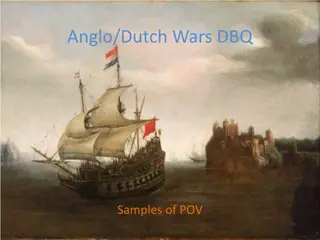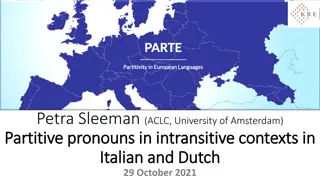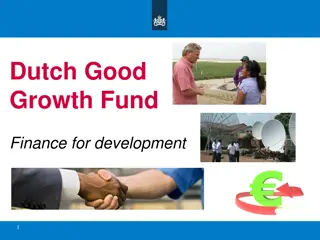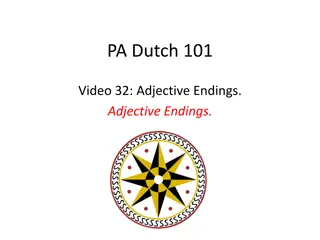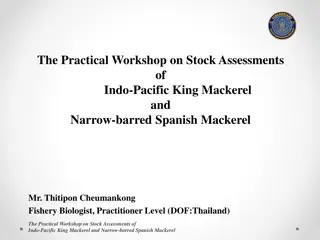Evolution of Indo-European Language: From Proto-Indo-European to Dutch
Explore the origins and development of the Indo-European language family, tracing its path from the Proto-Indo-European homeland to the emergence of Dutch. Discover key hypotheses such as the Anatolian and Kurgan theories, along with insights into the Germanic branch. Learn about Grimm's Law and the West Germanic languages that shaped early linguistic evolution.
Download Presentation

Please find below an Image/Link to download the presentation.
The content on the website is provided AS IS for your information and personal use only. It may not be sold, licensed, or shared on other websites without obtaining consent from the author.If you encounter any issues during the download, it is possible that the publisher has removed the file from their server.
You are allowed to download the files provided on this website for personal or commercial use, subject to the condition that they are used lawfully. All files are the property of their respective owners.
The content on the website is provided AS IS for your information and personal use only. It may not be sold, licensed, or shared on other websites without obtaining consent from the author.
E N D
Presentation Transcript
From PIE to Dutch Justas Petrosius
Index PIE Homeland Germanic West-Germanic Low Franconian Dutch Netherlandic
PIE Homeland North Pole? North Africa? The Atlantic? The Pacific? (Mallory 1989:143) Flora & Fauna in PIE Anatolian Hypothesis Kurgan Hypothesis
Flora & Fauna in PIE Fauna: Stork, Crane, Falcon, Vulture etc. Trout, Salmon. Fox, Wolf, Elk, Hedgehog. Suggest the PIE homeland in at least a partially forested area. Flora: Oak, Birch, Cherry, Bean, Berry etc. Suggest a temperate climate. (Fortson 2004: 39-40)
Anatolian Hypothesis Colin Renfrew in 1987 suggests that Indo-Europeans spread out of Asia Minor with the Neolithic advance in farming. (David & Ringe 2015: 201)
Kurgan Hypothesis PIE burial practices in IE texts. Dead persons buried in individual tombs & heaped over with earth (a burial Mound). The Body was sometimes cremated. Buried with items needed in the afterlife: tools, food, animals, sometimes other people. Burial mounds in the Russian Steppe (Kurgans) match the IE practices. According to Gimbutas their society had : a pastoral economy, patriarchy, domesticated horses, the wheel, worship of a solar deity. (Fortson 2004: 41)
Germanic Germanic (Form. Teutonic) lived in southern Scandinavia in the 1 mil. BCE. Attested in the I C. BCE by the Romans. (Fortson 2004: 300) P.I.E. Germanic West Germanic North Germanic East Germanic
Grimm's Law Rasmus Kristian Rask discovered the sound changes now named after Grimm in 1814. (Fortson 2004: 302) Grimm s Law Grimm III bh > b dh > d gh > g g h > g Grimm I p > f t > k > h k > h Grimm II b > p d > t g > k g > k
West Germanic 3 languages meaningfully attested before the year 1000: Old English, Old Saxon, Old High German. Old Low Franconian (Old Dutch) attested later. (Fortson 2004: 314)
Hebban olla vogala Hebban olla vogala nestas hagunnan hinase hic enda thu, uuat unbidan uue nu. "All birds have started making nests, except me and you, what are we waiting for? Dated to around 1100 A.D. (Fortson 2004: 315)
Middle Dutch Well attested starting in the 12 C. Principally in Flanders and Brabant. Spoken and written between 1150 and 1500. The literature of this time consist of courtly romances, epics, miracle plays, and religious writings. also called Diets, Dietsch in popular use, though not by linguists. (Fortson 2004: 328)
Jacob van Maerlant Der Naturen Bloeme (1263) - a collection of moral and satirical addresses to all classes of society. De Spieghel Historiael (1284) - an adaptation with additions of his own of Vincent de Beauvais s Speculum Historiale. Written to satisfy the rising class of commoners who wished for instructive reading in their own language. (King P.K. & P.F. Vincent 2019)
Modern Dutch From the 1500 to present. Flanders and Brabant were the most influential at first. The 1585 fall of Antwerp. Process of Standardization became quite strong in the 16thcentury. The Statenvertaling bible (1637), predominantly based on the urban dialects of Holland. Also used elements from various, even Dutch Low Saxon. (King P.K. & P.F. Vincent 2019)
Netherlandic In the 17thcentury the Dutch colonized South Africa. The language spoken by the colonists developed into Afrikaans. Flemish refers to the variety of Dutch which developed around Flanders. Dutch, Afrikaans and Flemish are often called Netherlandic. (Fortson 2004: 328)
Summary PIE (Kurgan) Homeland Germanic tribes in Northern Europe West-Germanic 425/450 1150: Old Dutch 1150 1500: Dietsch 1500 present: Modern Dutch Netherlandic
Sources David A. & D. Ringe. 2015. The Indo-European Homeland from Linguistic and Archaeological Perspectives. Annual Review of Linguistics 1:199 219. Encyclopaedia Britannica, 8th ed., s.v. Jacob van Maerlant Chicago: Encyclopaedia Britannica, 2019. https://www.britannica.com/biography/Jacob-van-Maerlant (accessed November 11, 2019) Fortson B.W. 2004. Indo-European Language and Culture. Oxford: Blackwell. King P.K. & P.F. Vincent. Encyclopaedia Britannica, 8th ed., s.v. Dutch literature Chicago: Encyclopaedia Britannica, 2019. https://www.britannica.com/art/Dutch-literature (accessed November 11, 2019) Mallory, J.P. 1989. In Search of the Indo-Europeans. New York: Thames & Hudson.
CONTACTS Justas.petrosius@flf.stud.vu.lt


